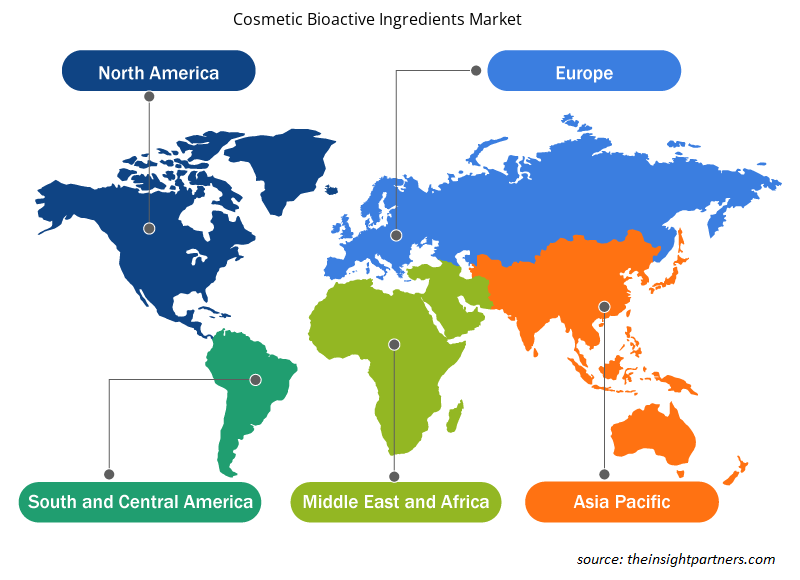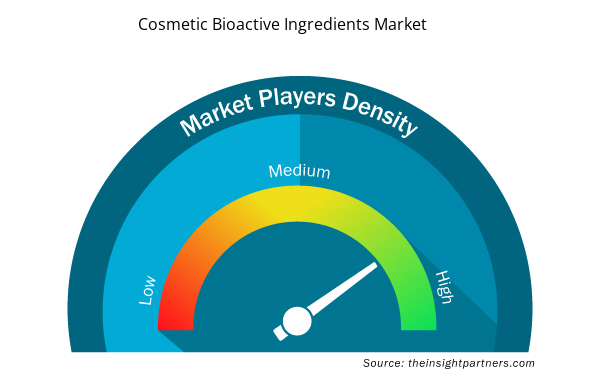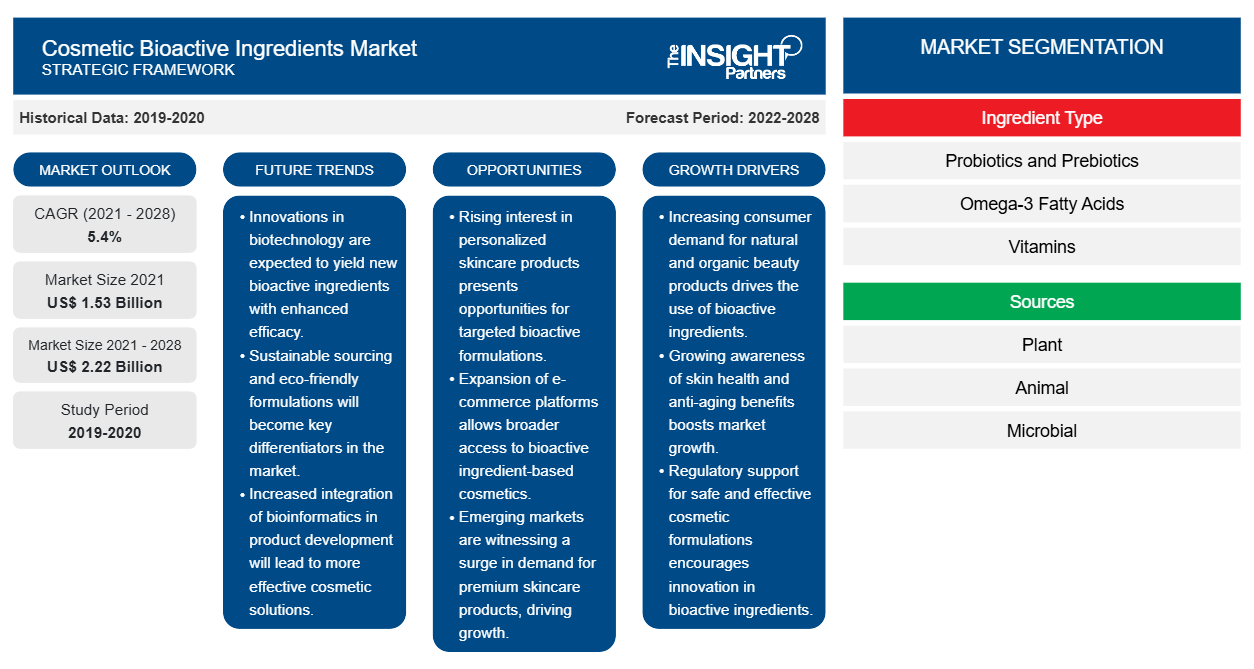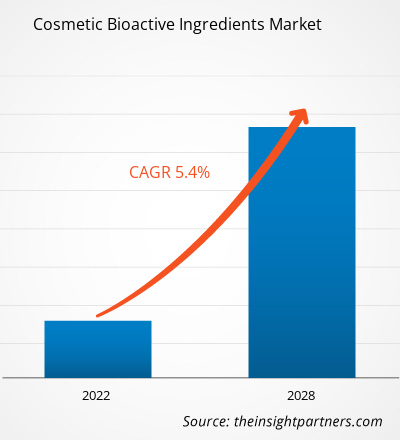化妆品生物活性成分市场规模预计将从 2021 年的 15.2991 亿美元增至 2028 年的 22.1596 亿美元;预计 2021 年至 2028 年的复合年增长率为 5.4%。
化妆品是用于清洁、美化、提升吸引力或改善外观的皮肤和头发产品。在这种制剂中通常使用的活性成分中,全球趋势是加入植物源产品,因为它们具有商业吸引力、安全性和丰富的成分,通常与协同或多功能效应有关。植物提取物富含存在于结构多样性高的植物中的次生代谢产物。类黄酮和非类黄酮都与有趣的化妆品特性有关,如光保护、抗衰老、保湿、抗氧化、收敛、抗刺激和抗菌活性。这些生物活性成分具有生物活性成分和药理作用,已被证明具有皮肤病学益处,可用于皮肤年轻化、光保护、伤口愈合等。化妆品生物活性成分市场的增长主要归因于人们对化妆品中天然成分的偏好日益增加,以及推出的生物活性成分数量不断增加。然而,严格的监管框架限制了化妆品生物活性成分市场的增长。
定制此报告以满足您的需求
您可以免费定制任何报告,包括本报告的部分内容、国家级分析、Excel 数据包,以及为初创企业和大学提供优惠和折扣
- 获取此报告的关键市场趋势。这个免费样品将包括数据分析,从市场趋势到估计和预测。
市场洞察
消费者对天然产品的需求不断增长,推动了可用于化妆品的生物活性物质相关研究。欧洲拥有一些最大的生物活性成分制造商和个人护理品牌,例如巴斯夫和帝斯曼。个人护理行业生物活性成分的推出正在推动市场的增长。2019 年 6 月,巴斯夫 Care Creations 为美容市场推出了三种新的活性成分,这些成分使用红毛丹树来为皮肤补水和恢复活力。同样,2019 年 4 月,龙沙推出了 H2OBioEV 生物活性成分,它是天然来源成分——水生隐孢子虫多糖和半乳糖阿拉伯聚糖——与水和甘油的独特组合。该成分通过补充必需的保湿剂赋予保湿能力,从而为形成和维持强大的表皮蛋白屏障提供最佳环境。
基于成分类型的洞察
根据成分类型,化妆品生物活性成分市场分为益生菌和益生元、ω-3 脂肪酸、维生素、类胡萝卜素和抗氧化剂、植物提取物、矿物质、氨基酸、蛋白质和肽等。氨基酸部分很可能在 2021 年占据最大的市场份额。然而,植物提取物部分预计将在预测期内实现最高的复合年增长率。
基于来源的洞察
化妆品生物活性成分市场按来源分为植物、动物和微生物。植物部分可能在 2021 年占据最大的市场份额。然而,微生物部分预计在预测期内在市场上的复合年增长率最高。
在化妆品生物活性成分市场运营的公司正在采用产品发布、并购、合作、产品创新和产品组合等策略,以扩大其全球影响力、维护品牌名称并满足最终用户日益增长的需求。
化妆品生物活性成分市场区域洞察
Insight Partners 的分析师已详尽解释了预测期内影响化妆品生物活性成分市场的区域趋势和因素。本节还讨论了北美、欧洲、亚太地区、中东和非洲以及南美和中美洲的化妆品生物活性成分市场细分和地理位置。

- 获取化妆品生物活性成分市场的区域特定数据
化妆品生物活性成分市场报告范围
| 报告属性 | 细节 |
|---|---|
| 2021 年市场规模 | 15.3亿美元 |
| 2028 年市场规模 | 22.2亿美元 |
| 全球复合年增长率(2021 - 2028) | 5.4% |
| 史料 | 2019-2020 |
| 预测期 | 2022-2028 |
| 涵盖的领域 | 按成分类型
|
| 覆盖地区和国家 | 北美
|
| 市场领导者和主要公司简介 |
|
化妆品生物活性成分市场参与者密度:了解其对业务动态的影响
化妆品生物活性成分市场正在快速增长,这得益于终端用户需求的不断增长,而这些需求又源于消费者偏好的不断变化、技术进步以及对产品优势的认识不断提高等因素。随着需求的增加,企业正在扩大其产品范围,进行创新以满足消费者的需求,并利用新兴趋势,从而进一步推动市场增长。
市场参与者密度是指在特定市场或行业内运营的企业或公司的分布情况。它表明在给定市场空间中,相对于其规模或总市场价值,有多少竞争对手(市场参与者)存在。
在化妆品生物活性成分市场运营的主要公司有:
- 荷兰皇家帝斯曼集团
- 味之素株式会社
- 罗盖特兄弟公司
- 腺苷二磷酸
- 巴斯夫
免责声明:上面列出的公司没有按照任何特定顺序排列。

- 获取化妆品生物活性成分市场顶级关键参与者概览
化妆品生物活性成分市场 –成分类型
- 益生菌和益生元
- Omega-3 脂肪酸
- 维生素
- 类胡萝卜素和抗氧化剂
- 植物提取物
- 矿物质
- 氨基酸
- 蛋白质和肽
- 其他的
化妆品生物活性成分市场 – 按来源
- 植物
- 动物
- 微生物
化妆品生物活性成分市场——按地区划分
北美
- 我们
- 加拿大
- 墨西哥
欧洲
- 法国
- 德国
- 意大利
- 英国
- 西班牙
- 欧洲其他地区
亚太地区 (APAC)
- 中国
- 印度
- 韩国
- 日本
- 澳大利亚
- 亚太其他地区
中东和非洲 (MEA)
- 南非
- 沙特阿拉伯
- 阿联酋
- 中东和非洲其他地区
南美洲 (SAM)
- 巴西
- 阿根廷
- 南美洲和中美洲其他地区
公司简介
- 荷兰皇家帝斯曼集团
- 味之素株式会社
- 罗盖特兄弟公司
- 腺苷二磷酸
- 巴斯夫
- FMC 公司
- Vytrus 生物科技
- 嘉吉公司
- Sensient 技术公司
- 杜邦
- 历史分析(2 年)、基准年、预测(7 年)及复合年增长率
- PEST 和 SWOT 分析
- 市场规模价值/数量 - 全球、区域、国家
- 行业和竞争格局
- Excel 数据集



Report Coverage
Revenue forecast, Company Analysis, Industry landscape, Growth factors, and Trends

Segment Covered
This text is related
to segments covered.

Regional Scope
North America, Europe, Asia Pacific, Middle East & Africa, South & Central America

Country Scope
This text is related
to country scope.
常见问题
Global cosmetic bioactive ingredients market is segmented by region into North America, Europe, Asia Pacific, Middle East & Africa, and South & Central America. In North America, the U.S. is the largest market for cosmetic bioactive ingredients. The growth of the region is attributed to increasing product launches coupled with increasing adoption of cosmetics.
The Europe region is expected to account for the fastest growth in the cosmetic bioactive ingredients market. Technological advancement for extraction of bioactive ingredients in this region contribute to this dominant share. Additionally, rising preference for natural ingredients in cosmetic products are said to be responsible for this growth.
The cosmetic bioactive ingredients market majorly consists of the players such BASF SE, DuPont de Nemours, Inc., FMC CORPORATION, Cargill, Incorporated, Sensient Technologies Corporation, DSM, Ajinomoto Co. Inc., Roquette Frères, ADM, and Vytrus Biotech amongst others.
The plant segment dominated the global cosmetic bioactive ingredients market and accounted for the largest revenue share of 62.50% in 2021.
The amino acids segment dominated the global cosmetic bioactive ingredients market and held the largest revenue share of 20.81% in 2021.
Key factors that are driving the growth of this market is rising preference for natural ingredients in cosmetic products and increasing launch of bioactive ingredients.
Cosmetics are products made to apply to the skin and hair to cleansing, beautifying, promoting attractiveness, or improving appearance. Amid the active ingredients usually used in this type of preparation, there is a global trend of incorporating vegetable source products due to their commercial appeal, safety, and rich composition, often related with a synergistic or multifunctional effect. Botanical extracts are high in secondary metabolites that exist in plants with high structural diversity. Both flavonoids and non-flavonoids are related to interesting cosmetic properties like photoprotection, anti-aging, moisturizing, antioxidant, astringent, anti-irritant, and antimicrobial activity. With their bioactive components and pharmacologic actions, these bioactive ingredients have been shown to provide dermatologic benefits with potential applications for skin rejuvenation, photoprotection, wound healing, and more.
Trends and growth analysis reports related to Chemicals and Materials : READ MORE..
The List of Companies - Cosmetic Bioactive Ingredients Market
- Koninklijke DSM N.V.
- Ajinomoto Co., Inc.
- Roquette Freres
- ADM
- BASF SE
- FMC Corporation
- Vytrus Biotech
- Cargill, Inc.
- Sensient Technologies Corporation
- DUPONT
The Insight Partners performs research in 4 major stages: Data Collection & Secondary Research, Primary Research, Data Analysis and Data Triangulation & Final Review.
- Data Collection and Secondary Research:
As a market research and consulting firm operating from a decade, we have published and advised several client across the globe. First step for any study will start with an assessment of currently available data and insights from existing reports. Further, historical and current market information is collected from Investor Presentations, Annual Reports, SEC Filings, etc., and other information related to company’s performance and market positioning are gathered from Paid Databases (Factiva, Hoovers, and Reuters) and various other publications available in public domain.
Several associations trade associates, technical forums, institutes, societies and organization are accessed to gain technical as well as market related insights through their publications such as research papers, blogs and press releases related to the studies are referred to get cues about the market. Further, white papers, journals, magazines, and other news articles published in last 3 years are scrutinized and analyzed to understand the current market trends.
- Primary Research:
The primarily interview analysis comprise of data obtained from industry participants interview and answers to survey questions gathered by in-house primary team.
For primary research, interviews are conducted with industry experts/CEOs/Marketing Managers/VPs/Subject Matter Experts from both demand and supply side to get a 360-degree view of the market. The primary team conducts several interviews based on the complexity of the markets to understand the various market trends and dynamics which makes research more credible and precise.
A typical research interview fulfils the following functions:
- Provides first-hand information on the market size, market trends, growth trends, competitive landscape, and outlook
- Validates and strengthens in-house secondary research findings
- Develops the analysis team’s expertise and market understanding
Primary research involves email interactions and telephone interviews for each market, category, segment, and sub-segment across geographies. The participants who typically take part in such a process include, but are not limited to:
- Industry participants: VPs, business development managers, market intelligence managers and national sales managers
- Outside experts: Valuation experts, research analysts and key opinion leaders specializing in the electronics and semiconductor industry.
Below is the breakup of our primary respondents by company, designation, and region:

Once we receive the confirmation from primary research sources or primary respondents, we finalize the base year market estimation and forecast the data as per the macroeconomic and microeconomic factors assessed during data collection.
- Data Analysis:
Once data is validated through both secondary as well as primary respondents, we finalize the market estimations by hypothesis formulation and factor analysis at regional and country level.
- Macro-Economic Factor Analysis:
We analyse macroeconomic indicators such the gross domestic product (GDP), increase in the demand for goods and services across industries, technological advancement, regional economic growth, governmental policies, the influence of COVID-19, PEST analysis, and other aspects. This analysis aids in setting benchmarks for various nations/regions and approximating market splits. Additionally, the general trend of the aforementioned components aid in determining the market's development possibilities.
- Country Level Data:
Various factors that are especially aligned to the country are taken into account to determine the market size for a certain area and country, including the presence of vendors, such as headquarters and offices, the country's GDP, demand patterns, and industry growth. To comprehend the market dynamics for the nation, a number of growth variables, inhibitors, application areas, and current market trends are researched. The aforementioned elements aid in determining the country's overall market's growth potential.
- Company Profile:
The “Table of Contents” is formulated by listing and analyzing more than 25 - 30 companies operating in the market ecosystem across geographies. However, we profile only 10 companies as a standard practice in our syndicate reports. These 10 companies comprise leading, emerging, and regional players. Nonetheless, our analysis is not restricted to the 10 listed companies, we also analyze other companies present in the market to develop a holistic view and understand the prevailing trends. The “Company Profiles” section in the report covers key facts, business description, products & services, financial information, SWOT analysis, and key developments. The financial information presented is extracted from the annual reports and official documents of the publicly listed companies. Upon collecting the information for the sections of respective companies, we verify them via various primary sources and then compile the data in respective company profiles. The company level information helps us in deriving the base number as well as in forecasting the market size.
- Developing Base Number:
Aggregation of sales statistics (2020-2022) and macro-economic factor, and other secondary and primary research insights are utilized to arrive at base number and related market shares for 2022. The data gaps are identified in this step and relevant market data is analyzed, collected from paid primary interviews or databases. On finalizing the base year market size, forecasts are developed on the basis of macro-economic, industry and market growth factors and company level analysis.
- Data Triangulation and Final Review:
The market findings and base year market size calculations are validated from supply as well as demand side. Demand side validations are based on macro-economic factor analysis and benchmarks for respective regions and countries. In case of supply side validations, revenues of major companies are estimated (in case not available) based on industry benchmark, approximate number of employees, product portfolio, and primary interviews revenues are gathered. Further revenue from target product/service segment is assessed to avoid overshooting of market statistics. In case of heavy deviations between supply and demand side values, all thes steps are repeated to achieve synchronization.
We follow an iterative model, wherein we share our research findings with Subject Matter Experts (SME’s) and Key Opinion Leaders (KOLs) until consensus view of the market is not formulated – this model negates any drastic deviation in the opinions of experts. Only validated and universally acceptable research findings are quoted in our reports.
We have important check points that we use to validate our research findings – which we call – data triangulation, where we validate the information, we generate from secondary sources with primary interviews and then we re-validate with our internal data bases and Subject matter experts. This comprehensive model enables us to deliver high quality, reliable data in shortest possible time.


 获取此报告的免费样本
获取此报告的免费样本